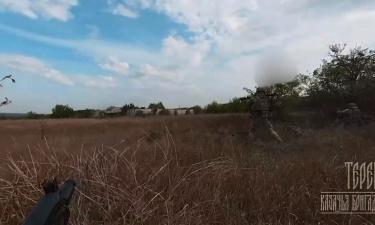Indonesian Earthquake: Number of Victims Rises
At least 531 people were confirmed dead and an unknown number of people remained buried under rubble a day after a massive earthquake rocked western Indonesia, leaving hospitals overwhelmed with victims and relief workers struggling to assess the full scale of the disaster.

Authorities said they expected the death toll from Wednesday's 7.6-magnitude quake to keep rising as more bodies were recovered with the help of excavators from hundreds of collapsed buildings in this city and elsewhere.
In one three-story private school that collapsed, about 60 people were trapped inside, with at least 24 people confirmed dead. Among the victims were two women, one dressed in brown and clasping another in a white Muslim veil, lying beside the ruins. Both were covered in light dust.
The Dr. M. Djamil hospital, the largest public hospital in the city, was overrun with injured and the dead. The hospital itself suffered major damage, with upper floors collapsing, forcing doctors to treat patients outside in makeshift tents whose floors were covered with a mix of bloody swabs, discarded syringes and mud from the intermittent rain. An anesthetist at the hospital said it was running low on liquid for intravenous drips and hoped the government or donors would send more soon.
Besides the expected casualties in Padang, officials said at least 150 people died in Pariaman, a rural town of about 80,000 people that was closest to the epicenter, north of Padang. Officials received reports of buildings destroyed there but little aid was getting through, eyewitnesses said, raising fears that casualty figures would escalate over the coming days.
Relief workers were hopeful they'd have a clearer picture of the damage across the region on Friday, as roads were cleared and more rescue crews arrived. Rescuers believed it was increasingly unlikely victims still buried under rubble would be brought out alive.
The disaster was a reminder that, for all of Indonesia's economic progress in recent years, it remains unusually vulnerable to natural disasters that test the government's resources. A vast archipelago nation of islands, it sits astride tectonic fault lines and volcanic zones that have produced a bewildering number of natural emergencies in recent years, including several major earthquakes and the December 2004 tsunami that left more than 200,000 people dead across the region.
Although Indonesia has emerged as a favorite of investors over the past year, in part because its economy continued to grow while others slipped into recession, it remains "a very poor country," says Tim Condon, an economist at ING in Singapore. Unlike other emerging Asian powers such as China, it continues to underinvest in infrastructure including hospitals, roads and power supplies that could help authorities better manage the country's unusual number of disasters.
Rescue efforts were complicated by aftershocks that caused further panic across western Sumatra. Early Thursday, another powerful earthquake struck about 180 miles from Wednesday's epicenter, the U.S. Geological Survey said. It damaged 1,100 buildings but there were no reports of deaths, the AP said.
In Padang, meanwhile, the buildings destroyed by the initial large quake included a computer school, a car financing company, and the busy Ambacang Hotel, where staff said about two-thirds of the hotel's 102 rooms were full at the time the earthquake hit. About 80 guests were attending a local government seminar on how to improve fishing methods while other patrons played billiards.
After the quake brought the six-story hotel crashing down, eight people were brought out, only two of them alive, said Zul Aliman, head of the civil police for West Sumatra province, who was overseeing the salvage operations.
At one point Thursday, a Komatsu digger rammed into the building, trying to get to rooms behind where rescuers had earlier heard cries for help. Part of the structure then collapsed, throwing dust and water over spectators who police allowed to stand only a few meters away. Rescue workers began moving closer to the seminar rooms and the uncovering of bodies but said they felt it unlikely anyone would still be alive.
The Wall Street Journal contributed to the report.
Subscribe to Pravda.Ru Telegram channel, Facebook, RSS!




